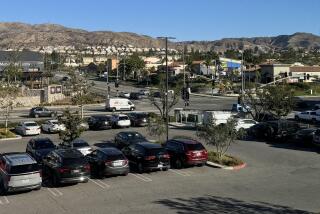Weintraub Seeks Review of Year-Round School : Education: The board member cites a football player’s death as catalyst for changing the schedule at single-track campuses.
- Share via
In the aftermath of a heat wave that killed a San Fernando High School football player, school board member Roberta Weintraub announced Thursday that she will ask the Los Angeles Unified School District to re-examine its year-round schedule.
She was reviving an issue that two years ago galvanized scores of parents concerned about their children starting school in August, when temperatures often soar and make conditions miserable at the district’s 625 public campuses, many of which are not air-conditioned.
Weintraub said she will introduce a motion at Tuesday’s board meeting requesting that Supt. Bill Anton re-evaluate the year-round calendar, with “serious consideration” given to schools in hotter parts of the district, such as the San Fernando Valley. Recommendations would be presented to the Board of Education no later than December for a new schedule to begin next fall.
“I am seriously disturbed about the fact that there is no hope for air-conditioning, and we’ve had one of the worst summers we can remember,” said Weintraub, who represents the mid-Valley. “Those August days were lost to education.”
Weintraub’s motion would affect only “single-track” schools where all students attend on the same schedule. Calendars at “multitrack” schools, which rotate students throughout the year to maximize classroom space, would remain unchanged.
Her comments came two weeks after 17-year-old Sergio Echevarria collapsed during an afternoon football practice held in 102-degree weather at San Fernando High School. The youth later died, and the county coroner’s office determined heat stroke was the cause.
Extreme heat in classrooms and on playgrounds and athletic fields was one of the prime concerns of Valley parents who bitterly opposed the district’s decision two years ago to switch to a year-round schedule.
District officials said the conversion was necessary to handle burgeoning enrollment by putting all schools in a position to go multitrack to relieve overcrowding. They also cited equitable treatment of schools, saying suburban campuses should also be required to switch along with inner-city schools.
The new calendar, with a longer winter break and a shorter summer vacation, went into effect districtwide last fall.
Weintraub said that when she voted for the year-round calendar, there seemed hope that the district would find money to buy cooling systems for its single-track schools, which are ineligible for state air-conditioning funds automatically granted to multitrack campuses. Now, with a bleak financial outlook, that hope has evaporated.
Reverting to a more traditional calendar, Weintraub said, may be more feasible if the district decides to shorten the school year to save money, a suggestion made this spring but later tabled.
But, she cautioned, “I’m not promising that we’re able to do this. We have to look at it from every viewpoint imaginable.”
Fellow board member Julie Korenstein, who opposed the original year-round plan, said she was pleased with Weintraub’s motion, which will probably be voted on by the board next month.
“I will always be supportive of the district returning to a traditional calendar,” Korenstein said. “You can’t expect a child to learn when they’re melting on their desks.”
But she also questioned the motives behind the motion, calling the issue a political one as Weintraub gears up for a reelection race next spring. Korenstein also will be up for reelection.
Cecelia Mansfield of the 31st District Parent Teacher Student Assn., which covers the Valley, said her organization would support a reassessment of the current schedule.
“This calendar is real hard for parents to accept when there are no benefits for their students, when they’re on a single track, when they aren’t overcrowded,” she said. “Returning students to schools in the middle of August increases the likelihood that we would lose days to the heat and expose teachers and children to horrible conditions.”
More to Read
Sign up for Essential California
The most important California stories and recommendations in your inbox every morning.
You may occasionally receive promotional content from the Los Angeles Times.














